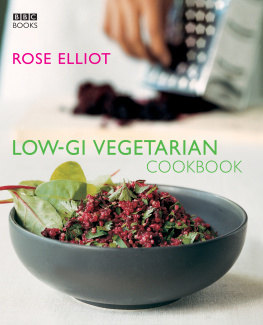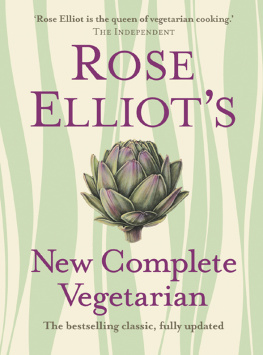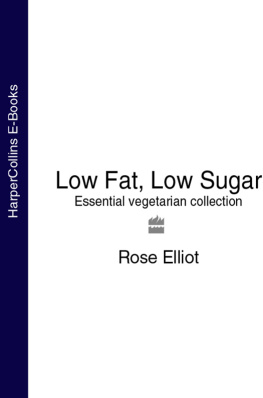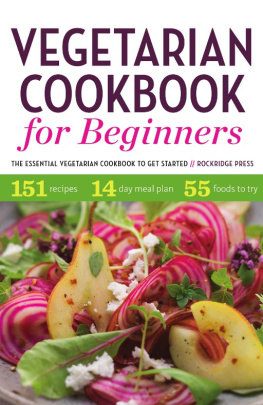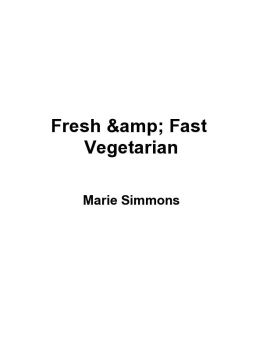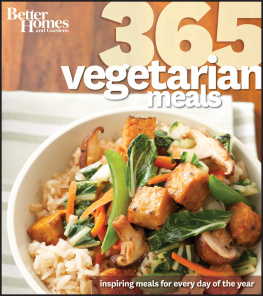CONTENTS
ACKNOWLEDGEMENTS
So many people have been involved with this book in one way or another and I would like to thank them all: Viv Bowler, Senior Commissioning Editor at BBC Worldwide, and my agent, Barbara Levy, for seeing and sharing my vision for the book and helping to make it a reality, for which the talents of Isobel Gillan, designer, and Michael Paul, photographer, were essential, and much appreciated and valued. The photographic shoots were a particular pleasure Id like to thank Louise Mackaness for preparing the food so well, Kumiko Ochiai for styling the shots (as well as making wonderful coffee and giving me tips on Japanese cooking), and Yuki Sugiura for helping at the shoots. A big thank you, too, to Sarah Reece, who not only kept everything running smoothly throughout the editorial process, but also posed for all the chapter-opener shots. Youre a star, Sarah. Id also like to thank Rachel Connolly for her thorough yet sensitive editing of the text; Mari Roberts, brilliant editor of the new GI edition; Kelly Davis for proofreading; Hilary Bird for indexing; Dr Jacqueline Stordy for information on omega-3 oils; Lyndel Costain for advice on nutrition, and the Vegetarian Society for general information and advice. As ever, a huge thank you to my family and friends, who must feel as if they have lived with this book for months, and most of all to my husband, Robert, who really has, helping with shopping, tasting, washing up and being generally patient and supportive. Thank you Robert, thank you everyone. It was really appreciated.
INTRODUCTION
THE GI GLYCAEMIC INDEX HAS FASCINATED ME EVER SINCE I FIRST READ ABOUT IT AND REALIZED THAT EATING LOW -GI FOODS IS A FABULOUS WAY TO GET SLIM AND STAY SLIM.
Eating low-GI Foods is a way to be slim while eating delicious, healthy, normal food, without calorie-counting or even serious limiting of portions. For a health-conscious food-lover who is also vain enough to want to be thin, this really seemed to be the answer
So I used the GI in my own cooking and based my book Fast, Fresh and Fabulous on it. This was done in a low-key way because at the time the term GI was still very much dietician speak. How times change: now GI is everywhere! So we decided to call this beautiful new edition the Low-GI Vegetarian Cookbook, and I have greatly expanded upon the glycaemic index, describing in detail how to use it for effective, permanent weight loss, and for good health and vitality at every stage of life.
What exactly, then, is the GI, and whats so good about it? The GI is the glycaemic index, which is a measure of how food affects our blood glucose. Any food containing carbohydrate registers on the GI according to how quickly it raises our blood glucose our blood sugar level as it is broken down and digested.
This is important, because while we need carbohydrates for energy, we dont need the wrong sort: those with a high rating on the GI index. These are converted rapidly into glucose in the body, giving us the familiar sugar high. Too much glucose in the bloodstream can be harmful and has to be removed rapidly. To do this, the body takes emergency action: it releases high levels of insulin, which remove glucose from the blood into the cells, where it is used as energy and any excess stored or converted to fat.
Then, an hour or so after eating a high-GI food, we get an energy low and the desire for another quick energy fix and, if we eat more of the wrong carbohydrates at this point, the cycle continues. This distorts our natural appetite, making us crave snacks because we never feel satisfied. If this process is repeated too often, we may become insulin resistant, which means it takes ever larger amounts of insulin to reduce our blood sugar. This can lead to high blood pressure, diabetes, raised cholesterol and the increased storage of fat a group of symptoms known as metabolic syndrome, or Syndrome X.
What we need is low-GI carbohydrates, from which the glucose is released slowly and steadily. These carbohydrates keep us feeling full and satisfied for longer. The body has time to use the glucose methodically, which gives us a sustained, steady flow of energy.
Eating these healthy carbohydrates can have a positive effect on every part of your body, from the digestive system to the heart and even the skin. A low-GI diet has been shown not only to help achieve and maintain a healthy weight, but also to reduce the risk of stroke, prevent or control diabetes and possibly even reduce the risk of breast cancer and Alzheimers disease. It is a very healthy way of eating and perfectly suited to the vegetarian and vegan way of life.
In the following pages Ive explained how to eat a healthy vegetarian or vegan diet, whatever your age and situation. Youll find details of the proteins you need, as well as the low-GI carbohydrates, and how you can make sure youre getting the necessary minerals, vitamins and essential fats. Plus, how to plan balanced meals, and how you can use the GI to lose weight, gain health and never have to diet again.
These are the best recipes for slimming. Eat as much of these as you like.
COOKS NOTES
The ingredients you need are fully described and explained throughout the book and there is also a list of stockists at the back (see ), so I hope youll find everything clear and easy to follow. Many of the ingredients are easy to get just about anywhere; a few are less well known and available in health-food shops and specialist supermarkets, although they are beginning to creep onto the shelves of ordinary supermarkets.
All the recipes in this book list both imperial and metric measurements. Conversions are approximate and have been rounded up or down. In most of the recipes you can be fairly relaxed about measuring but to be on the safe side its always best to choose one set of measurements and stick with it, rather than mixing them.
If you have a fan oven, you need to reduce the temperatures given throughout this book, as recommended by your oven manufacturer. On my oven this usually means reducing the heat by about two notches on the dial, so 180C/350F becomes 160C/325F, and so on.
When eggs are used, they are medium (large in the US), free-range and preferably organic.
Australian cooks
Your tablespoons measure 20 ml (4 teaspoons) whereas ours are only 15 ml (3 teaspoons), so where tablespoons are given, please measure 3 teaspoons to get the correct amount.
American cooks
Your pints are smaller only 450 ml whereas ours are 600 ml. So for liquids please use a British pint measure or follow the metric quantities given.
A HEALTHY VEGETARIAN OR VEGAN LOW-GI DIET IS ONE THAT PROVIDES ALL THE NUTRIENTS WE NEED FOR ENERGY, GROWTH, REPAIR, MAINTENANCE AND PROTECTION, IN ROUGHLY THE RIGHT PROPORTIONS. WE NEED PROTEIN, CARBOHYDRATES, VITAMINS, MINERALS AND ESSENTIAL FATS AND A LOW-GI VEGETARIAN OR VEGAN DIET CAN SUPPLY THEM ALL.
PROTEIN
Protein is essential for growth, maintenance and repair of tissues, and for the healthy functioning of the body. The best sources of protein are:

